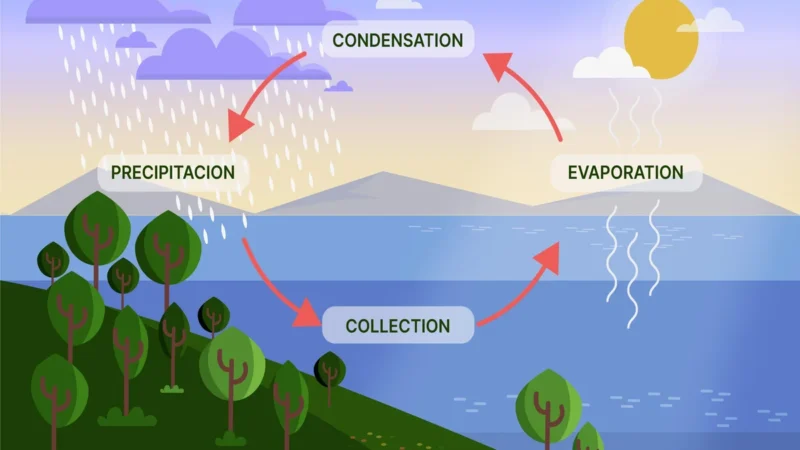Mitigating the Impact of Climate Change on Pregnancy: Effective Strategies for Resilience

Climate change poses significant challenges to various aspects of human life, including maternal health and pregnancy outcomes. This article explores effective strategies to mitigate the impact of climate change on pregnancy, ensuring the resilience of expectant mothers and promoting healthy pregnancies.
Understanding the Impact of Climate Change on Pregnancy:
Climate change can adversely affect pregnancy in several ways. Rising temperatures can lead to heat stress, increasing the risk of preterm birth and low birth weight. Extreme weather events, such as hurricanes and floods, can disrupt healthcare systems, exacerbating maternal health issues. Air pollution, intensified by climate change, can cause respiratory problems and complications during pregnancy. It is crucial to acknowledge these impacts and implement strategies to safeguard pregnant individuals.
Enhancing Access to Prenatal Care and Healthcare Facilities:
One effective strategy is improving access to prenatal care and healthcare facilities, especially in areas prone to climate change-related risks. This includes expanding healthcare infrastructure, providing transportation assistance, and ensuring the availability of skilled healthcare professionals. Mobile clinics and telemedicine initiatives can bridge the gap in remote or disaster-affected regions, offering essential prenatal care, monitoring, and support.
Strengthening Climate Resilience in Healthcare Systems:
Building climate resilience within healthcare systems is vital for protecting pregnant individuals. This involves implementing disaster preparedness plans, improving emergency response capacities, and training healthcare professionals on climate-related risks. By integrating climate considerations into healthcare infrastructure and policies, the impacts of extreme weather events can be minimized, ensuring continuity of care during crises.
Promoting Public Awareness and Education:
Raising public awareness about the intersection of climate change and pregnancy is essential. Education campaigns can inform expectant parents about potential risks, preventive measures, and adaptation strategies. Engaging community leaders, healthcare providers, and local organizations can help disseminate accurate information, encouraging behavior changes that promote resilience. Moreover, promoting sustainable practices, such as reducing carbon emissions, can contribute to mitigating climate change and safeguarding maternal health.
Policy Advocacy and Implementation:
Advocacy for robust climate policies that prioritize maternal health is crucial. Governments and policymakers should prioritize funding for research on climate change’s impact on pregnancy and support evidence-based interventions. Comprehensive policies can address climate-related health disparities and ensure equitable access to healthcare services for vulnerable populations. Collaboration between policymakers, healthcare providers, and community organizations is vital for effective implementation and monitoring of these policies.
Key Takeaways:
Mitigating the impact of climate change on pregnancy requires a multi-faceted approach that includes enhancing healthcare access, building climate resilience, promoting public awareness, and advocating for supportive policies. By implementing these strategies, we can empower expectant mothers, protect their health, and foster resilience in the face of climate change challenges.
FAQs
How does climate change affect pregnancy?
Climate change can affect pregnancy by increasing the risk of heat stress, which can lead to preterm birth and low birth weight. Extreme weather events can also disrupt healthcare systems, making it difficult to access necessary prenatal care. Additionally, air pollution, intensified by climate change, can cause respiratory problems and complications during pregnancy.
What are some effective strategies to mitigate the impact of climate change on pregnancy?
Effective strategies include enhancing access to prenatal care and healthcare facilities, strengthening climate resilience in healthcare systems, promoting public awareness and education about climate change and pregnancy, and advocating for supportive policies. These approaches aim to improve healthcare access, build resilience, and empower pregnant individuals to protect their health.
How can access to prenatal care be improved in areas vulnerable to climate change?
Improving access to prenatal care in vulnerable areas can involve expanding healthcare infrastructure, providing transportation assistance, and ensuring the availability of skilled healthcare professionals. Initiatives such as mobile clinics and telemedicine can also bridge the gap in remote or disaster-affected regions, offering essential prenatal care, monitoring, and support.
What does building climate resilience in healthcare systems entail?
Building climate resilience in healthcare systems involves implementing disaster preparedness plans, improving emergency response capacities, and training healthcare professionals on climate-related risks. By integrating climate considerations into healthcare infrastructure and policies, the impacts of extreme weather events can be minimized, ensuring continuity of care during crises.
How can public awareness and education help mitigate the impact of climate change on pregnancy?
Public awareness and education play a vital role in mitigating the impact of climate change on pregnancy. Education campaigns can inform expectant parents about potential risks, preventive measures, and adaptation strategies. Engaging community leaders, healthcare providers, and local organizations can help disseminate accurate information, encouraging behavior changes that promote resilience.


